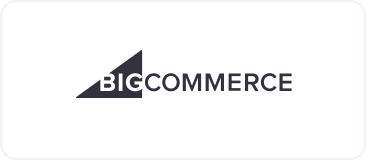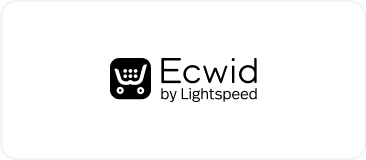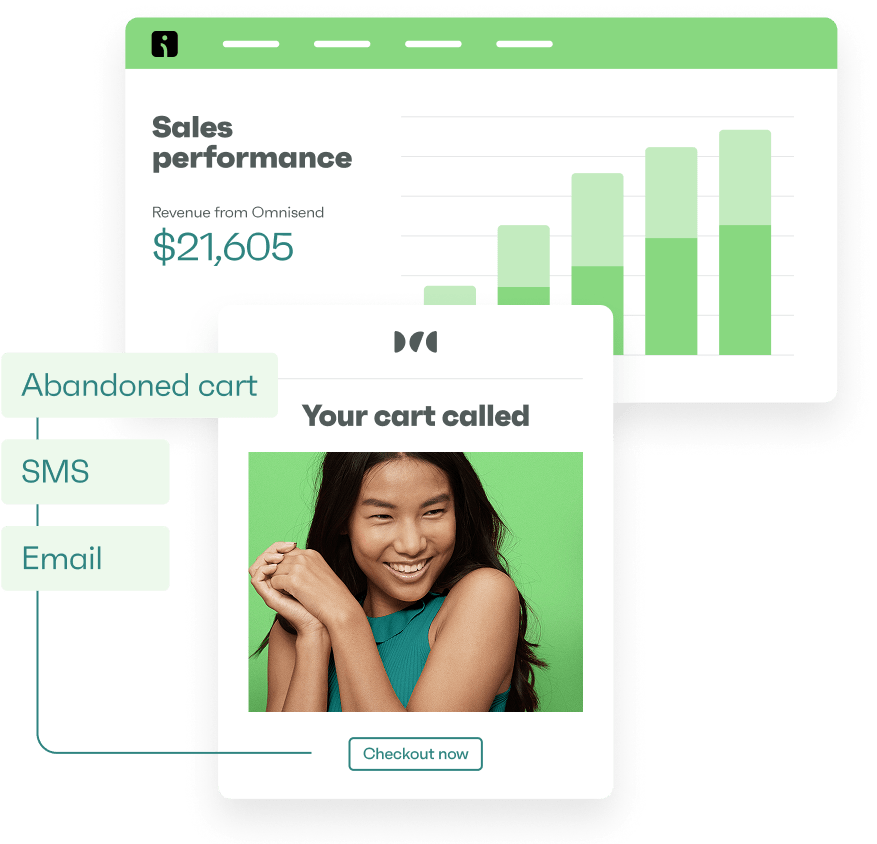Drive sales on autopilot with ecommerce-focused features
See FeaturesUnderstanding how to start dropshipping for free is a great way to overcome the cost barrier that comes with opening a business. You don’t need inventory or thousands of dollars upfront to earn from dropshipping.
With traditional retail, you need to buy products first and hope they sell later. Dropshipping flips this model because you only purchase items after customers pay you. This eliminates financial risk from unsold inventory.
However, while you don’t need upfront cash investment for inventory or subscriptions, you do need to spend time and effort. You’ll need to conduct research, set up, and implement marketing.
This guide reveals how to start a dropshipping business with no money in the beginning. You’ll discover free platforms, zero-cost suppliers, and no-budget marketing strategies. Every step provides actionable methods you can implement today.
Quick sign up | No credit card required
Benefits and challenges of starting dropshipping with no money
To start dropshipping for free, it’s important to understand both the pros and cons. Starting a dropshipping business with no money comes with advantages like:
- No inventory costs or storage fees upfront
- Low financial risk since you only buy products after they’ve been purchased
- Quick startup without months of planning or funding
- Flexible business model
While the benefits of dropshipping with zero money are excellent, there are also downsides, like:
- Slower growth without paid advertising to drive initial traffic
- Manual work required since premium automation tools cost money
- Limited features on free platform tiers and plans
However, cash flow timing presents the biggest challenge. Suppliers often require payment before marketplace payouts arrive. This creates temporary gaps you must manage carefully.
Here’s an overview of what you don’t pay upfront vs. what may come later:
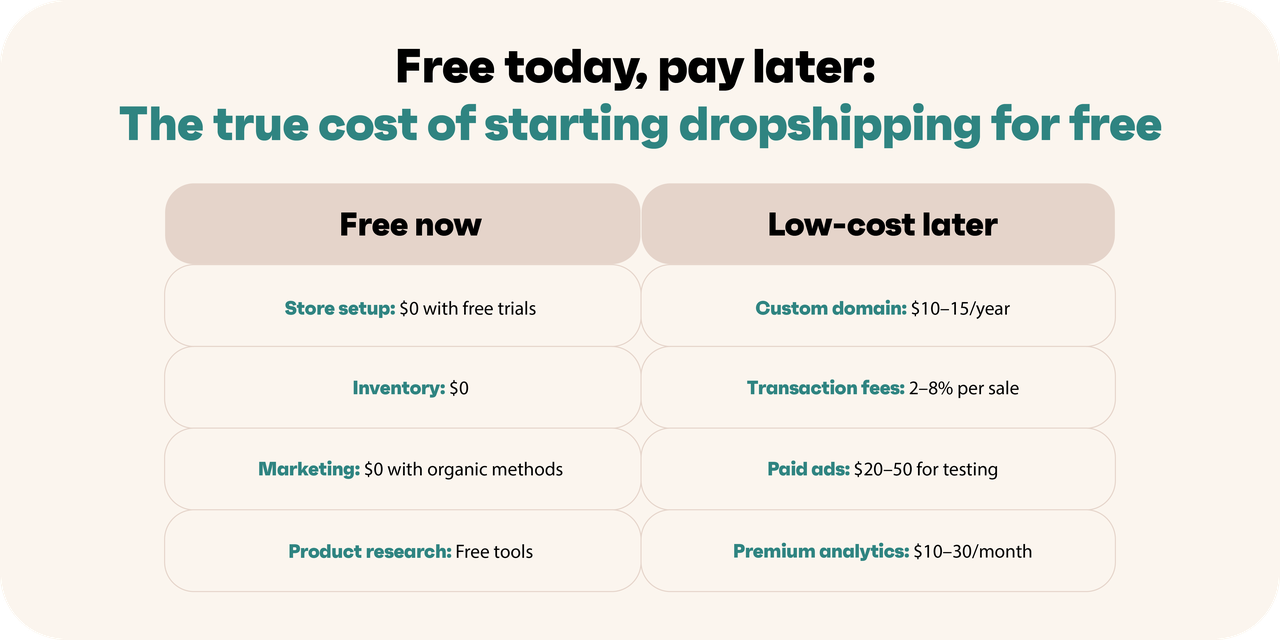
Is it really possible to start dropshipping for free?
Yes, it’s possible to start dropshipping with virtually no money up front.
However, some small costs remain unavoidable but manageable. Most marketplaces charge per-sale fees rather than upfront payments.
For instance, Amazon takes $0.99 per sale plus referral fees. You’ll also need to complete ID verification for most platforms.
You may need a credit card on file for supplier payments between order placement and customer payouts. It’s also advisable to have a small buffer of under $100 to help with these gaps. Even platforms like Shopify offer free trials, and many successful dropshippers began on shoestring budgets.
Now that you know it’s possible, it’s time to outline the steps for how to start a dropshipping store for free.
Step-by-step guide: How to start a dropshipping business with no money
This section breaks down each step for how to start a dropshipping business for free — from initial idea to store launch. These steps are straightforward, making them easy for even beginners to follow.
How to start a dropshipping business with no money:
- Step 1: Choose your niche and product type
- Step 2: Find a reliable supplier (with $0 upfront cost)
- Step 3: Select a selling platform (free and low-cost platform options)
- Step 4: Set up your store or account (free setup basics)
- Step 5: Add products to your store and optimize listings
- Step 6: Launch and market your dropshipping store for free
- Step 7: Fulfilling orders and customer service (at no extra cost)
- Step 8: Scale up — reinvest profits to grow (from $0 to a sustainable business)
Step 1: Choose your niche and product type
When learning how to start dropshipping for free, begin by picking a product niche. Opt for something in demand but not overcrowded. A focused niche makes marketing easier, especially if you have no ad budget.
Use free tools like Amazon’s trending list or Google Trends to spot what people are searching for. Here’s what such research could look like:
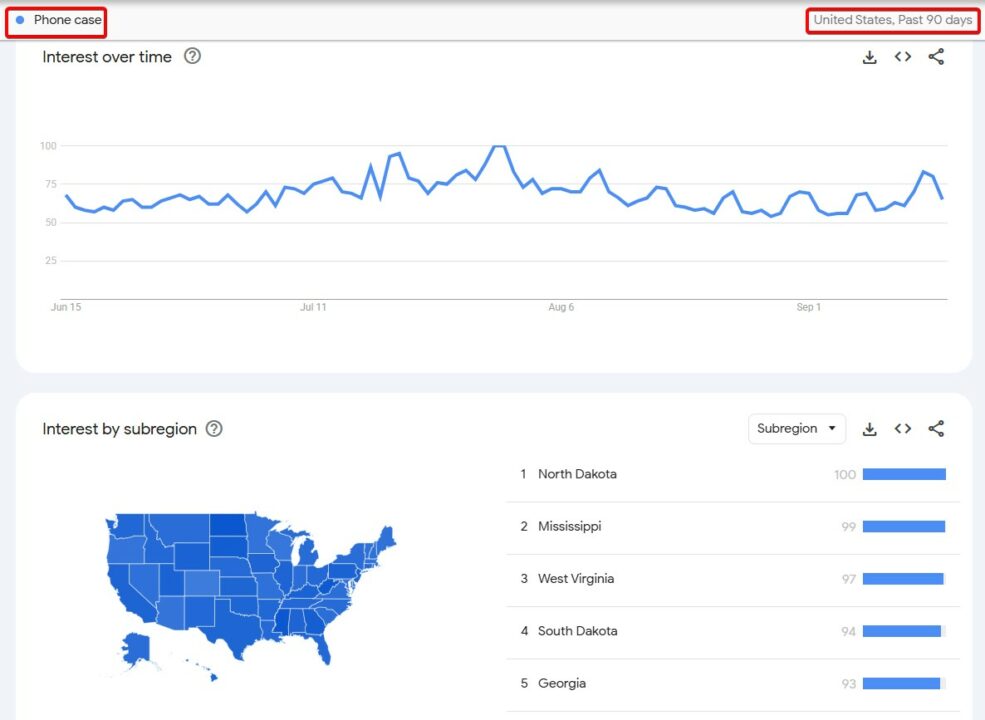
Look for products that meet the “easiest items to dropship” criteria: lightweight, not fragile, and in steady demand.
For instance, phone accessories work well because they’re inexpensive to source and appeal to a broad audience. Other high-volume niches include:
- Clothing apparel
- Wall art
- Car accessories
- Pet supplies
Just make sure to avoid trademark infringement and watch out for regulated items.
Step 2: Find a reliable supplier (with $0 upfront cost)
When figuring out how to start a dropshipping business with no money, consider where you source your products. Marketplaces like AliExpress offer variety, while print-on-demand platforms like Printful let you sell custom items.
Look for suppliers who ship directly to customers without upfront costs — you only pay once a product sells. You can use tools like SaleHoo to look for trusted suppliers:
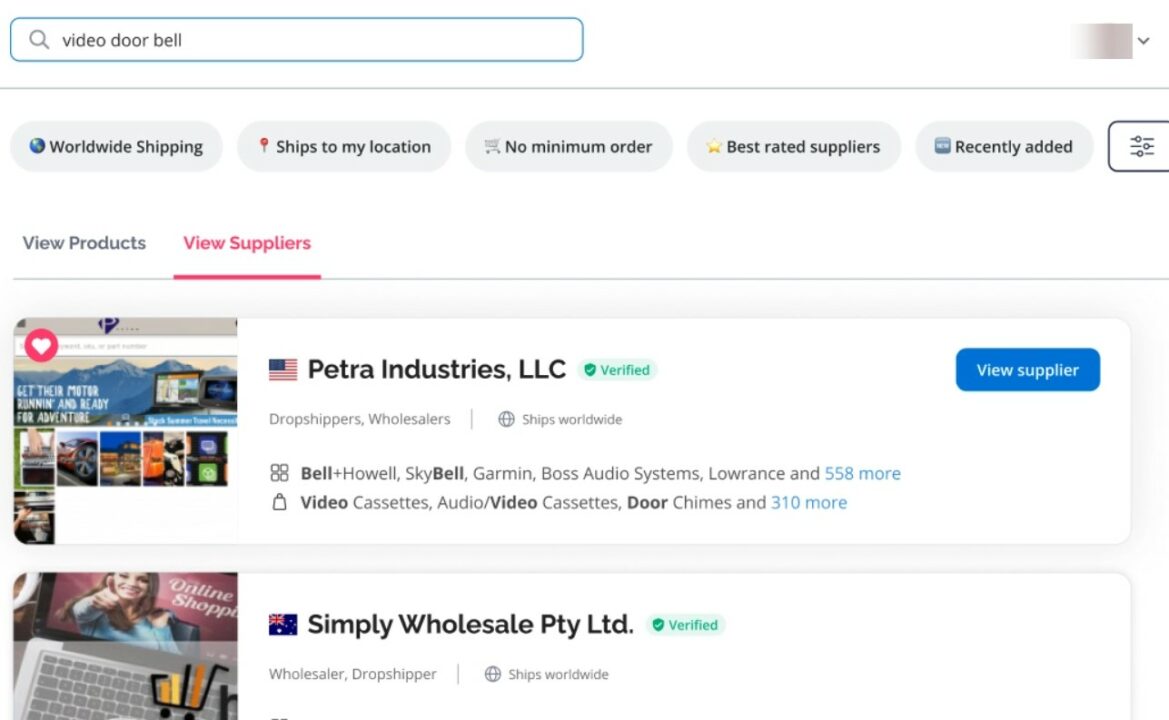
Pick suppliers that have:
- Positive third-party reviews
- Favorable shipping terms
- Zero shipping fees
- Unbranded shipping (blank packaging) for marketplaces like Amazon
- Wide product range
- Reliable customer service
Step 3: Select a selling platform (free and low-cost platform options)
To learn how to start dropshipping for free, decide whether to use marketplaces or your own store. Platforms like Amazon’s Individual Seller plan, eBay, and Facebook Shops are free and bring built-in traffic.
Running your own store with Shopify’s trial or free builders, like Big Cartel, offers more control.
If money is tight, start on marketplaces as they require no design skills and give instant audiences. Just make sure to check each platform’s dropshipping rules before listing.
Step 4: Set up your store or account (free setup basics)
For marketplaces, complete registration on platforms like Amazon Seller Central or eBay by providing your ID and bank details. For online stores, take advantage of free trials. Setting up your store’s aesthetic can also come at no cost by using free themes and designing your logo with tools like Canva.
Add an “About Us” page and essential policies to build trust without spending a dime:
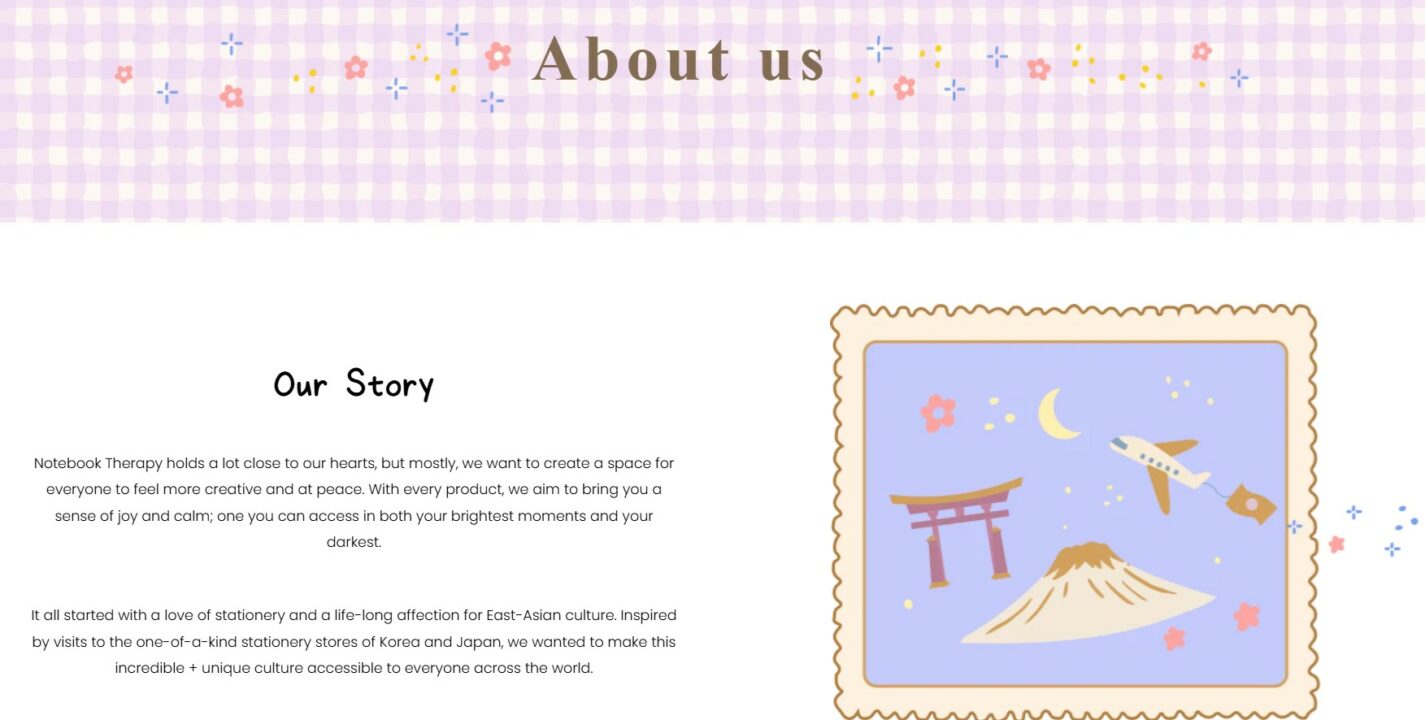
Explore free apps or built-in tools to import products. Some dropshipping apps have free plans that let you import AliExpress products automatically.
Step 5: Add products to your store and optimize listings
When learning how to start a dropshipping store for free, add products efficiently.
Download supplier images or create free mockups, write compelling titles and benefit-focused descriptions, and set prices that cover costs and profit. Include keywords buyers search for to increase organic sales without spending a penny.
Here’s a comparison of a bland dropshipping product page vs. an optimized one:
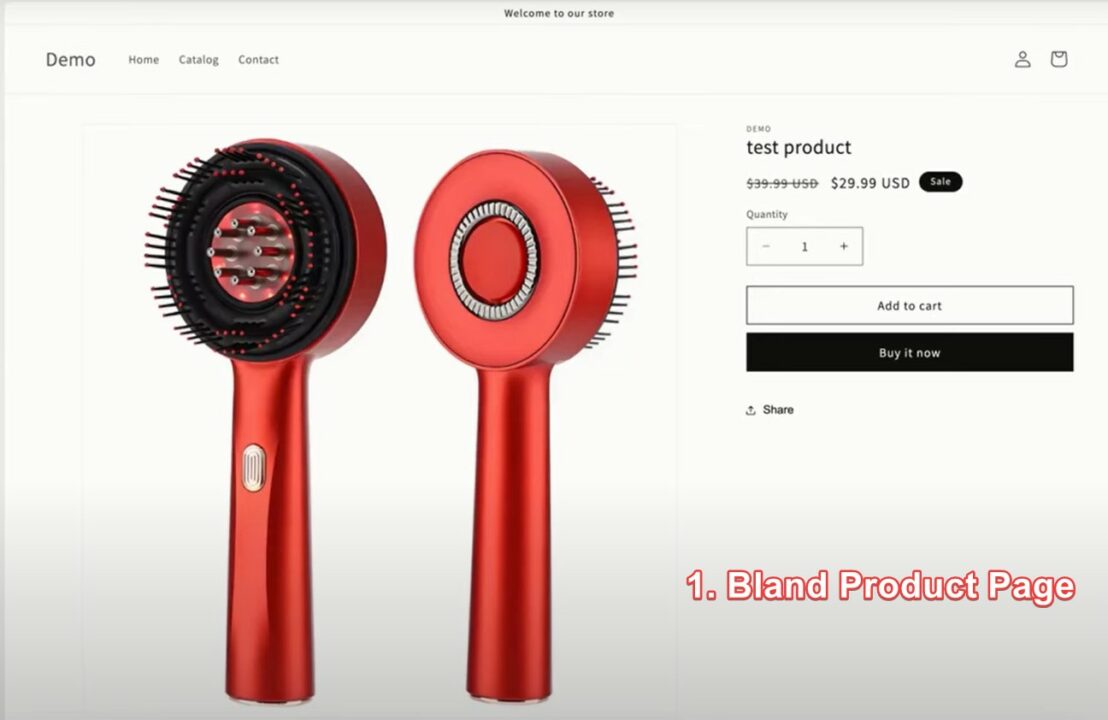
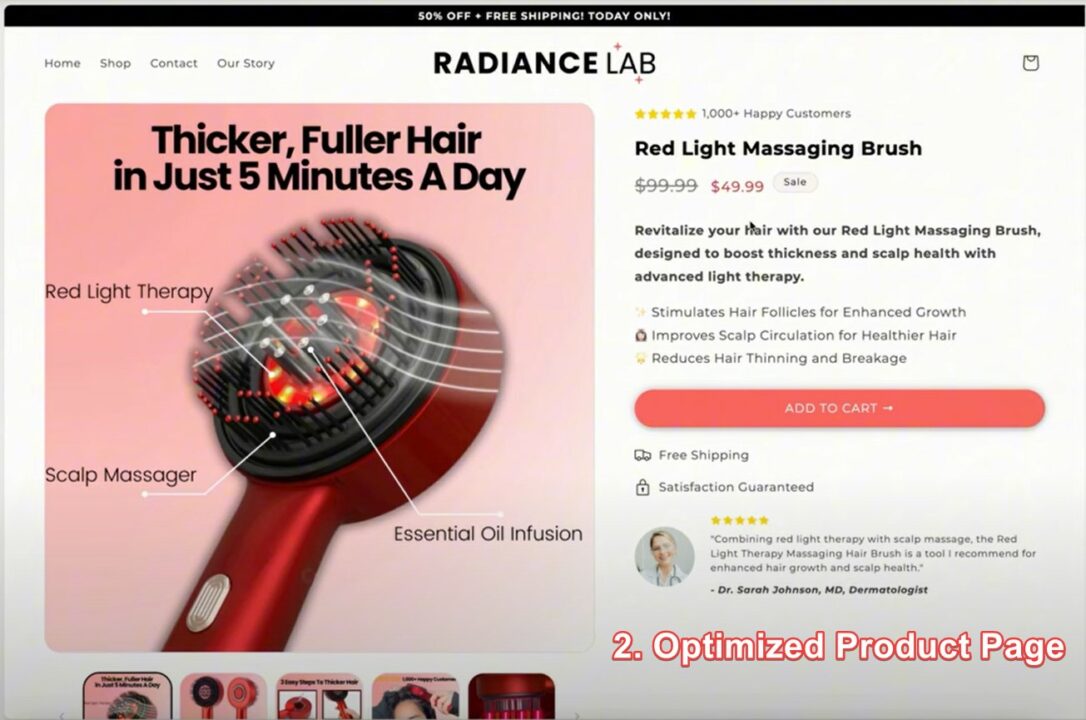
How can you ensure your prices are profitable? Use this simple formula:
Supplier cost + shipping + platform fees + target margin = Minimum selling price
That aside, here’s a quick checklist before you publish:
- Verify that pricing covers all costs
- Check that images display properly
- Proofread descriptions
- Test checkout process
Step 6: Launch and market your dropshipping store for free
Learning how to start dropshipping for free involves understanding how to drive traffic without spending on advertising.
Set up social media pages for your store on Instagram, TikTok, and Facebook. Then, consistently post content related to your products.
Start simple blogs with articles related to your niche to gain SEO traffic. If your niche is fitness gear, write posts like “10 Best At-Home Fitness Tips” to subtly promote products.
Platforms like Omnisend help you build email lists — also at no cost with its Free plan.. Omnisend automates welcome emails, cart recovery, and shipping emails on the free plan, too, increasing your sales without ad spending. Here’s an example of a welcome series by Omnisend:
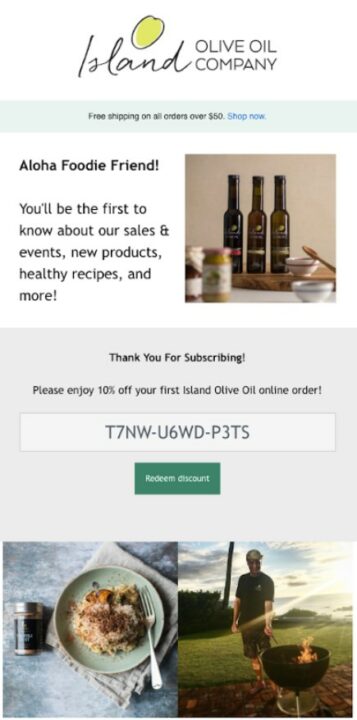
Reach out to micro-influencers who can review products for small commissions or free samples. You can also advertise on platforms like TikTok or Instagram, collect customer photos and testimonials for authentic social proof, and participate in relevant forums and Facebook groups to improve your reach.
You can follow a seven-day launch plan that looks like this:
- Day one to two: Set up social media accounts
- Day three to four: Create initial content
- Day five to six: Join relevant communities
- Day seven: Launch and announce
Snatcher’s success story:
Snatcher Online switched to Omnisend to get the most out of email automation and earned over $120K in recovered revenue. Its biggest revenue generator was cart recovery campaigns, which were previously missing from its email tool.
It achieved a 50% email campaign open rate and a 74% increase in revenue through automation workflows.
Read the success story here.
Step 7: Fulfilling orders and customer service (at no extra cost)
Handle incoming orders professionally without paid software. Once orders are received, promptly place identical orders with suppliers, inputting your customer’s shipping address.
This costs nothing except product costs — customer payments have already been provided. Get tracking numbers from suppliers and pass information to customers through marketplaces or email.
For damaged products, coordinate with suppliers for reshipments since reputable suppliers work with sellers on issues. Great customer service sets businesses apart through positive reviews and word-of-mouth marketing.
Step 8: Scale up — reinvest profits to grow (from $0 to a sustainable business)
Once sales pick up, reinvest earned profits strategically. Allocate portions of your profits into paid marketing, like small Facebook ads, once you know which products sell well.
Invest in tools or upgrades, such as custom domains or automation tools, once order volume grows. Add more products within successful niches or test new niches using the same free methodology.
Continuously reinvest portions of revenue to improve your business. It’s also important to maintain the same mindset that got you into learning how to start dropshipping for free.
Here’s a video sharing valuable insights about how to scale a dropshipping business from zero to millions:
Dropshipping on Amazon with no money
Amazon’s Individual Seller plan has no monthly fees, so yes, you can actually start for free.
Here’s how to dropship on Amazon with no money:
- Create an Individual Seller account
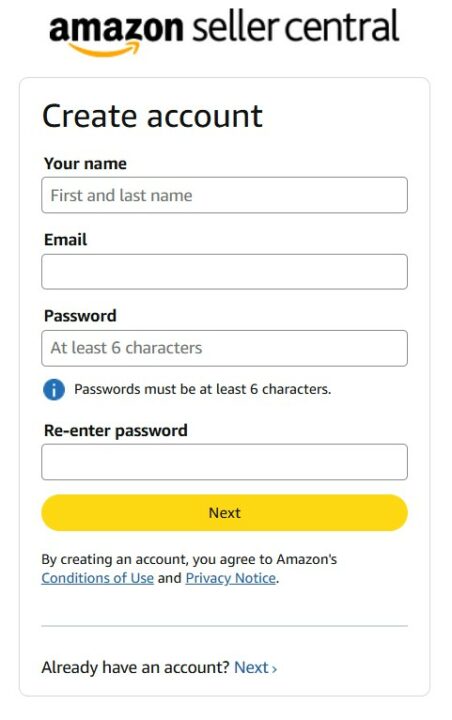
- Find compliant suppliers and list products from the items they provide
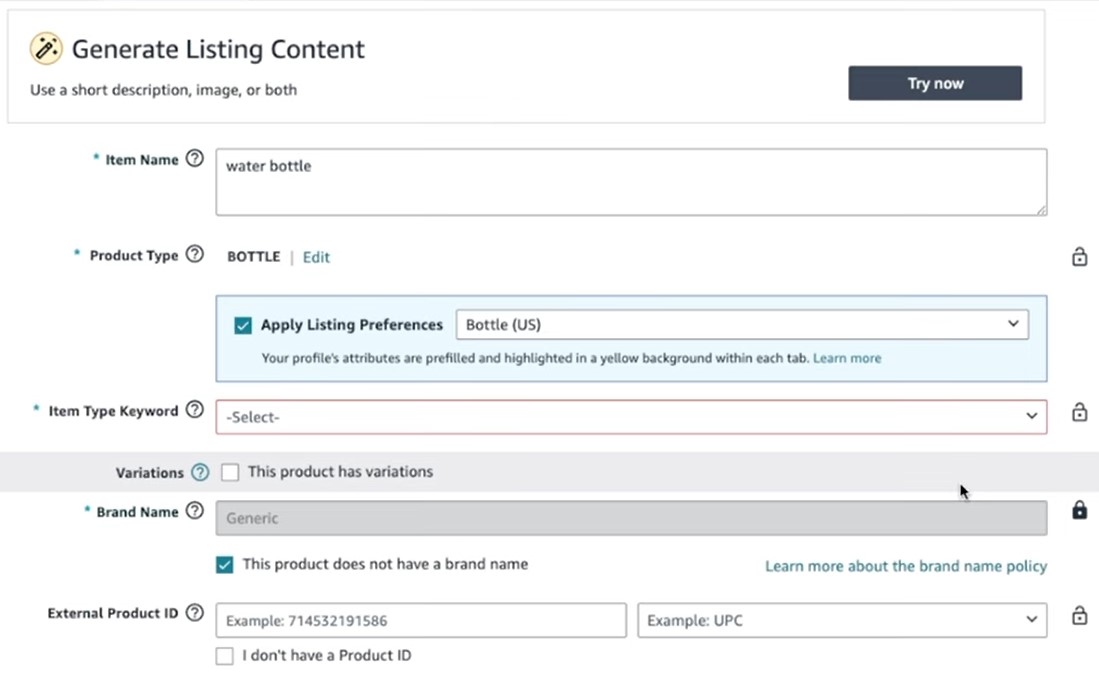
- Optimize listings with keywords for search visibility
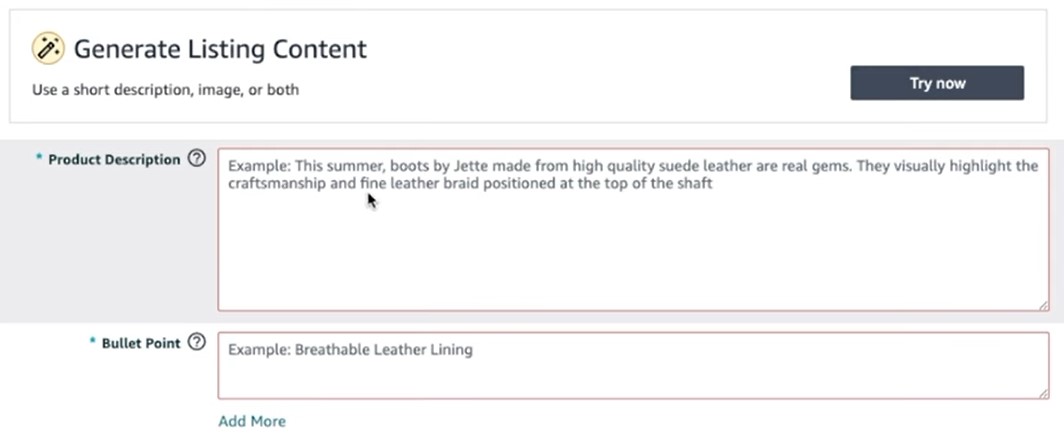
- Fulfill orders quickly by using suppliers with fast ecommerce shipping
When orders come in, make sure your supplier ships without invoices, slips, or branding — Amazon requires you to be the seller of record, so the customer should feel the item is coming directly from you.
So, is dropshipping on Amazon still profitable in 2025? It can be. Fees (referral + $0.99 per sale) and competition make margins thin, but unique products and niches still work.
If you see steady sales, upgrade to the Professional plan for advanced tools and save fees once you pass 40 sales per month.
Keep in mind that you cannot use retailers like Walmart as suppliers. Also, avoid slow shipping and check whether your category is restricted.
Amazon can be a powerful launchpad with zero upfront cost, but treat it as just one channel and not your only channel.
Tools you can use for free right now
A good toolkit covers every aspect of launching and running your dropshipping business without spending money up front.
Here’s a curated no-cost starter toolkit for learning how to start dropshipping for free:
| Tool | Purpose | Free limit |
| Shopify | Storefront setup | Three-day free trial |
| Big Cartel | Store hosting | Up to five products forever |
| Google Trends | Product research | Unlimited searches |
| Amazon Best Sellers | Market validation | Free browsing |
| Canva | Logo and graphics design | Basic templates included |
| Omnisend | Email and SMS automation | Welcome flows, cart recovery, newsletters |
| Google Analytics | Traffic analysis | Complete feature access |
Success stories: How they started dropshipping for free
These three companies prove that learning how to start dropshipping for free can eventually help you grow a massive business worth billions.
1. Gymshark — from zero stock to global brand
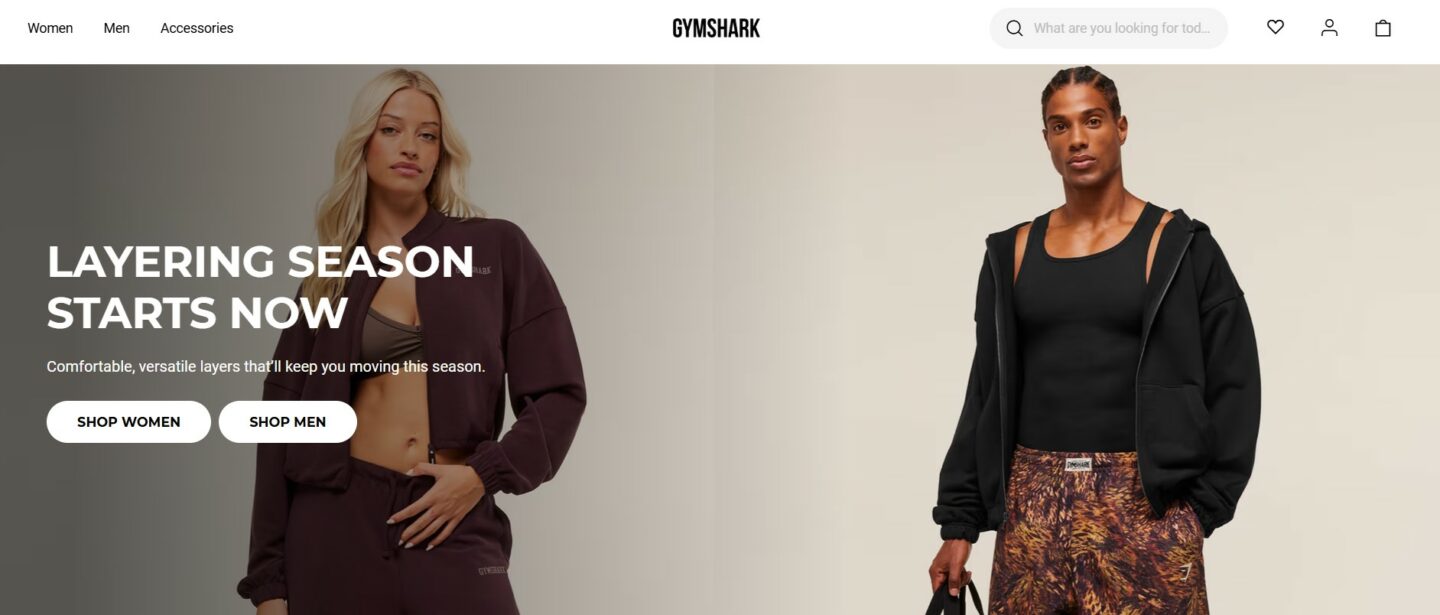
Ben Francis started Gymshark at 19 from his parents’ garage in 2012. With no money for inventory, he built a simple website selling products he didn’t own. When orders came in, third-party suppliers shipped directly to customers. This zero-budget dropshipping approach let him test demand without financial risk.
“We had to be creative because we had no money for stock,” Francis later explained.
The company focused heavily on social media marketing and partnered with fitness influencers who genuinely used its products. By 2020, Gymshark was valued at over $1.4 billion.
What worked:
- Dropshipped supplements to generate initial cash flow
- Genuine community building around a fitness lifestyle
- Reinvested profit into better products and influencer partnerships
- Transitioned from dropshipping to manufacturing as revenue grew
2. Wayfair — scaling an asset-light dropship network
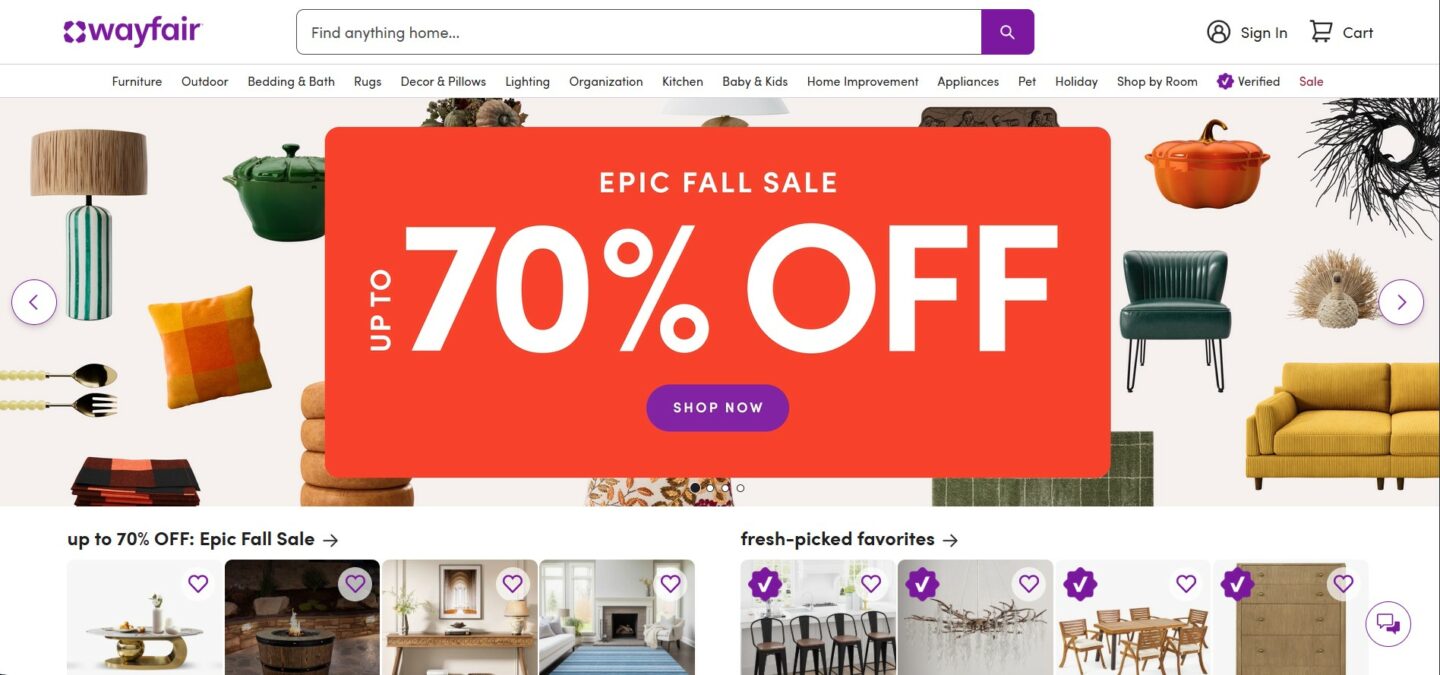
Niraj Shah and Steve Conine launched Wayfair in 2002 from a spare bedroom. Their company, originally CSN Stores, ran multiple sites selling home goods they didn’t stock.
Orders were fulfilled directly by suppliers, letting them test products with no upfront investment and figure out what sold best before committing to deeper supplier relationships.
Today, Wayfair operates as one of the world’s largest furniture retailers, generating billions in annual revenue. Most orders still ship directly from supplier warehouses to customers, proving its original dropshipping model remains profitable at scale.
What worked:
- Multiple niche websites to test different product categories
- Strong supplier network with seamless integration systems
- Customer experience and satisfaction
- Asset-light model even after scaling
3. Zappos — validating demand with manufacturer dropshipping
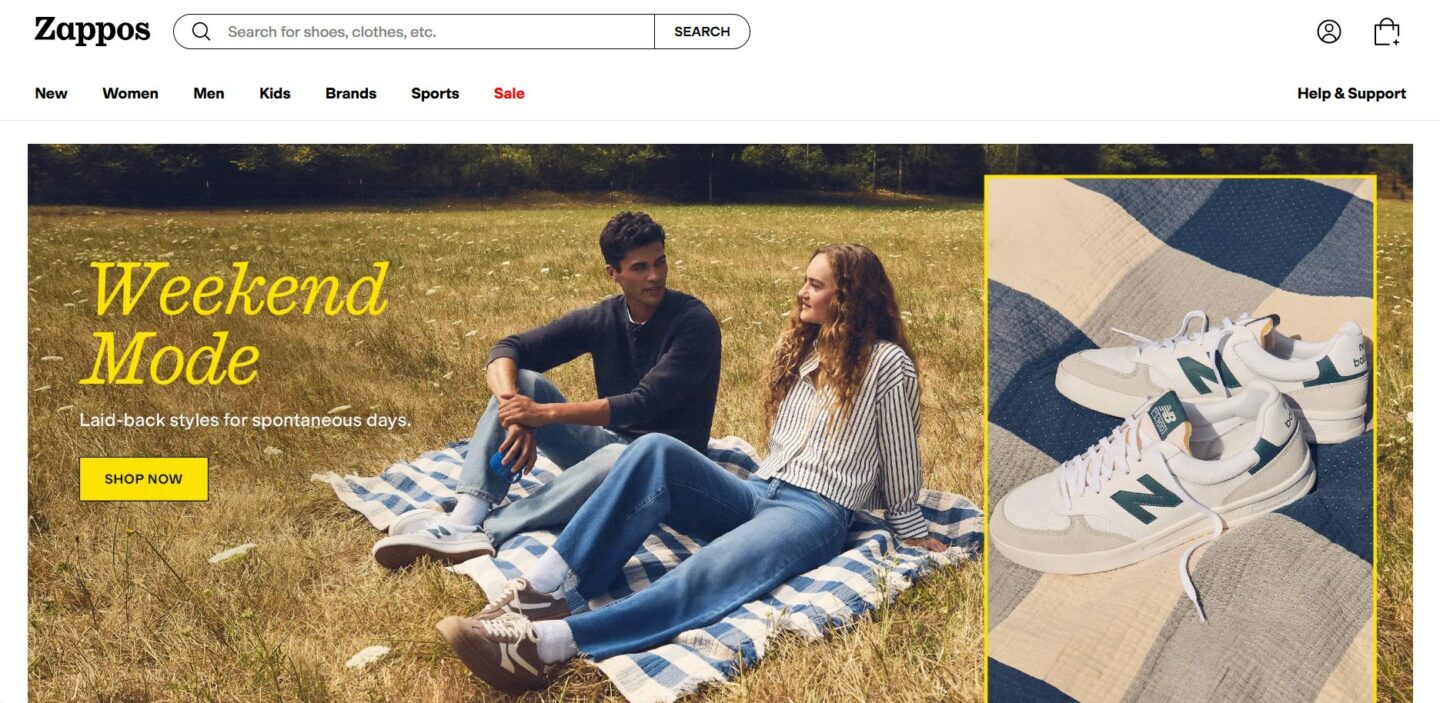
Tony Hsieh and Nick Swinmurn started Zappos in 1999, believing people would buy shoes online. Speaking on his initial doubts, Hsieh said: “Nick left a message saying he wanted to start a company that sold shoes online. I didn’t think consumers would buy shoes sight unseen, and Nick didn’t have a footwear background.”
Without money for inventory, Swinmurn photographed shoes at local stores and posted them on their website. When orders came in, he bought shoes retail and shipped them to customers.
By 2009, Amazon acquired Zappos for $1.2 billion, validating its customer-first approach.
What worked:
- Validated market demand before investing in inventory systems
- Prioritized exceptional customer service
- Built supplier relationships gradually as order volume increased
- Turned early limitations into competitive advantages
Conclusion and next steps
You don’t need to spend on inventory. Instead, take advantage of free platforms and marketing methods and narrow your focus on profitable niches. The best way to learn how to start dropshipping for free is by doing things practically. Pick the product and launch your store today.
If it doesn’t work out, you haven’t lost money from the attempt. But if it does succeed, you stand to gain a new income stream with unlimited potential.
Quick sign up | No credit card required
Legal disclaimer: Dropshipping comes with risks and no guarantee of success. This guide provides educational information, not legal or financial advice, based on best practices. Earnings are not guaranteed, and you may encounter unavoidable fees as you establish your business. Always comply with platform terms and consult professionals for legal advice.
FAQs
1. Can I do dropshipping for free?
Yes, you can start dropshipping without upfront costs. Use free marketplace seller accounts, find suppliers who don’t charge membership fees, and leverage organic marketing methods.
2. How can a beginner dropship successfully?
Beginners succeed by choosing simple products, starting on marketplaces with built-in traffic, focusing on customer service excellence, and reinvesting profits systematically.
3. Why is dropshipping illegal?
Dropshipping isn’t illegal, but you have to do it properly. Follow platform policies, be transparent about shipping times, use legitimate suppliers, and comply with tax requirements.
4. What is the easiest item to dropship?
Phone accessories, fitness gadgets, and home organization products work well for beginners.
5. Is it free to start dropshipping on Amazon?
Amazon’s Individual Seller plan has no monthly fees, so it’s free to start. You pay $0.99 per sale plus referral fees only when items sell. However, you must follow Amazon’s strict dropshipping policies carefully.
6. How to dropship on Amazon with no money?
Create an Individual Seller account, find compliant suppliers, list products with optimized keywords, and fulfill orders quickly. When profitable, you can upgrade to the Professional plan.
7. Is dropshipping on Amazon still profitable?
Yes, but competition is intense. Success requires finding unique products, providing excellent service, and maintaining competitive pricing while following Amazon’s policy requirements consistently.
8. Can I start dropshipping with $0?
Absolutely. Use free marketplace accounts, partner with suppliers with no upfront fees, and market organically through social media and content creation.
9. Is $100 enough for dropshipping?
Yes, $100 covers small platform fees, domain costs, and initial marketing tests. You can then reinvest early profits strategically.
TABLE OF CONTENTS
TABLE OF CONTENTS


No fluff, no spam, no corporate filler. Just a friendly letter, twice a month.
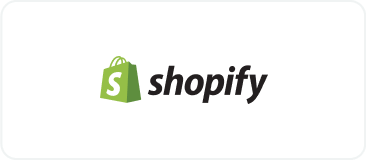
 OFFER
OFFER


